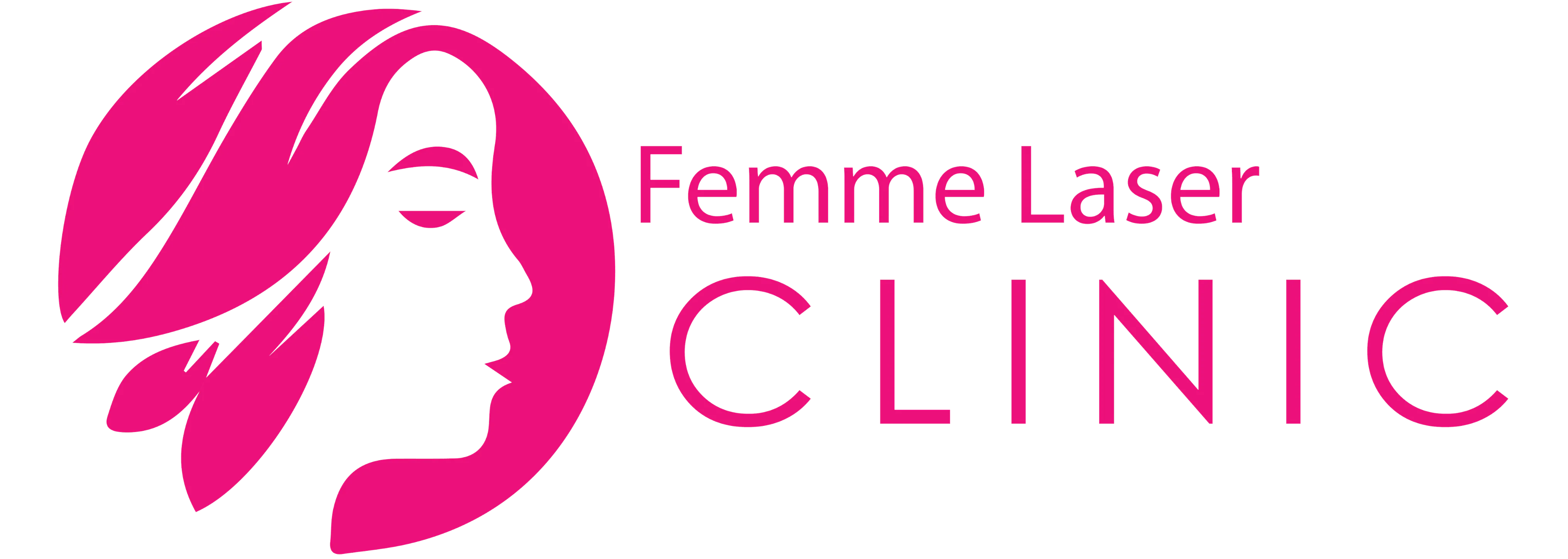Laser hair removal is a popular cosmetic procedure used to remove unwanted hair from various parts of the body, including the armpits. This method of hair removal offers a long-term solution for individuals tired of constantly shaving, waxing, or plucking their underarm hair. But how many treatments are needed for laser hair removal to be …
Laser hair removal is a popular cosmetic procedure used to remove unwanted hair from various parts of the body, including the armpits. This method of hair removal offers a long-term solution for individuals tired of constantly shaving, waxing, or plucking their underarm hair.
But how many treatments are needed for laser hair removal to be effective?
Laser hair removal works by targeting the hair follicles with concentrated light energy, which damages the hair follicle and inhibits its ability to produce hair. The number of treatments required for laser hair removal depends on several factors, such as:
- hair color: dark hair responds better to laser treatment compared to lighter hair
- skin tone: individuals with lighter skin and darker hair have the best results
- hair thickness: coarser hair may require more treatments compared to finer hair
According to the American Academy of Dermatology Association, most individuals require a minimum of six to eight treatments for significant hair reduction. However, some may require more sessions depending on their specific hair and skin characteristics.
The process of laser hair removal involves several steps, including:
- consultation
- preparation
- the actual treatment
During the treatment, the technician will use a handheld laser device to target the hair follicles in the treatment area. The treatment is generally well-tolerated, and most individuals experience minimal discomfort.
One of the main benefits of laser hair removal is permanent hair reduction. Other benefits include:
- precision and speed
- minimal discomfort
- cost-effectiveness in the long run
However, as with any cosmetic procedure, there are potential side effects, such as skin irritation and redness, which typically subside within a few days.
Before undergoing laser hair removal, it is important to prepare properly. This includes avoiding sun exposure, plucking or waxing the treatment area, and shaving the area a day before the treatment. Additionally, certain medications, such as blood thinners, should be avoided to reduce the risk of complications.
In conclusion, laser hair removal is an effective method of removing unwanted hair, including in the armpits. The number of treatments needed varies depending on individual factors, but most people require six to eight sessions for significant hair reduction. By understanding the process and properly preparing, individuals can achieve long-lasting results with minimal discomfort.
Table of Contents
ToggleWhat Is Laser Hair Removal?
Laser hair removal is a cosmetic procedure that utilizes a concentrated beam of light to eliminate unwanted hair. It targets the hair follicles, preventing future hair growth. This method is particularly effective for areas such as the armpits, where traditional hair removal methods like shaving or waxing can be inconvenient. Laser hair removal offers a long-term solution, but it may require multiple treatments to achieve the best results.
How Does Laser Hair Removal Work?
- Laser hair removal targets the hair follicles, emitting light energy to impair their ability to grow hair.
- The pigment in the hair follicles absorbs the light, damaging the follicle and hindering future hair growth.
- Treatment requires multiple sessions to catch the hair in its various growth phases.
- Avoid plucking or waxing before treatment to ensure the follicles remain intact for effective removal.
- After treatment, expect reduced hair growth in the targeted area.
How Many Treatments Are Needed for Laser Hair Removal?
One of the most common questions about laser hair removal is how many treatments are needed for optimal results. The answer varies depending on several factors, including skin type, hair color and thickness, and the area being treated. In this section, we will discuss the various factors that can affect the number of treatments needed for laser hair removal and provide insights on what to expect during the process.
Factors That Affect Number of Treatments Needed
The number of laser hair removal treatments needed can vary depending on various factors, including hair color, thickness, and the size of the targeted area. Generally, dark and coarse hairs may require fewer sessions compared to lighter and finer hairs. Individual response to the treatment can also play a role in determining the number of sessions required. Additionally, factors such as hormonal imbalances and certain medications can affect the effectiveness of the treatment, which can impact the number of sessions needed for optimal results. It is essential to consult with a qualified professional when considering laser hair removal to assess specific needs and create a personalized treatment plan.
Step one: Consultation,
Step two: shaving,
Step three: cooling gel,
Step four: laser,
Step five: post-treatment care. Sounds like a spa day, but with less relaxation and more hair removal.
What Are the Steps of a Laser Hair Removal Treatment?
Laser hair removal is a popular method for achieving long-lasting hair reduction in the armpits. But how exactly does the process work? In this section, we will break down the five main steps of a laser hair removal treatment. From the initial consultation and preparation to the post-treatment care, we will discuss the process in detail and provide insight into what to expect during each step. By the end, you will have a better understanding of the steps involved in a laser hair removal treatment for the armpits.
Step 1: Consultation and Preparation
During Step 1: Consultation and Preparation for laser hair removal, the process typically involves:
- Consultation: Discussing your medical history, skin type, and expectations with the technician.
- Patch Test: Some facilities may perform a patch test to check for any adverse reactions.
- Preparation: Following specific pre-treatment instructions provided by the specialist.
Time to say goodbye to your armpit hair and hello to a clean slate (or should we say, skin).
Step 2: Shaving and Cleaning the Treatment Area
- Prior to the laser hair removal treatment, it is important to shave the area to ensure that the laser targets the hair follicles and not the surface hair.
- After shaving, the treatment area is thoroughly cleaned to remove any residue and prepare it for the laser procedure.
Did you know? Properly preparing the treatment area by shaving and cleaning is crucial for the effectiveness of the laser hair removal process. Source: Vibrant Skin Bar
Step 3: Applying a Cooling Gel
- Cleanse the treatment area to remove any residue or oils.
- Apply a thin, even layer of cooling gel to the skin to soothe and protect it during the laser treatment.
- Ensure complete coverage of the area to be treated with the gel.
After applying the cooling gel, the next step involves commencing the laser hair removal procedure. It is essential to carefully follow
Step 3: Applying a Cooling Gel
To ensure optimal results and minimize any discomfort.
Step 4: Laser Hair Removal Procedure
- Consultation: Discuss treatment objectives, duration, and potential outcomes with the specialist.
- Skin Preparation: The treatment area is cleansed and a cooling gel is applied to minimize discomfort.
- Laser Procedure: High-energy light targets hair follicles, hindering future hair growth.
- Post-Treatment Care: Aftercare instructions are provided, including skincare and sun protection.
For optimal results, it is important to follow the specialist’s guidelines and attend all scheduled appointments for the
Step 5: Post-Treatment Care
- Stay Hydrated: Drink plenty of water to keep the skin hydrated and aid in the healing process.
- Avoid Sun Exposure: Shield the treated area from the sun and use sunscreen to prevent pigmentation issues.
- Gentle Cleansing: Cleanse the area gently to avoid irritation, using mild, fragrance-free products.
- Avoid Heat: Refrain from hot showers, saunas, and activities that can cause excessive sweating.
- Moisturize: Apply a soothing, non-comedogenic moisturizer to keep the skin soft and supple.
Pro-tip: Follow the post-treatment care instructions provided by your laser technician for optimal results and minimal discomfort. Source: The Laser Club
Say goodbye to razor burn and hello to smooth underarms with laser hair removal – no more missed spots or painful ingrown hairs.
What Are the Benefits of Laser Hair Removal?
Laser hair removal offers a multitude of benefits, such as long-term hair reduction, precise targeting, and a reduced risk of ingrown hairs. It also saves time and money compared to continuous waxing or shaving, making it a convenient choice for many individuals.
For those curious about the benefits of laser hair removal, it’s important to note the long-lasting results and improved skin texture after treatment.
Consider laser hair removal for smooth, hassle-free skin and the freedom from daily shaving or waxing routines.
What Are the Side Effects of Laser Hair Removal?
Laser hair removal may result in temporary side effects such as redness, swelling, and skin irritation. In rare cases, it may also cause changes in skin color, blistering, or scarring. It is important to follow post-treatment care instructions and use sunscreen to minimize these effects.
Having knowledge about the potential side effects of laser hair removal is essential in making an informed decision about undergoing the procedure.
How to Prepare for a Laser Hair Removal Treatment?
Before undergoing a laser hair removal treatment for your armpits, it is important to properly prepare your skin for the procedure. This section will cover the steps you should take to ensure the best possible results from your treatment. From avoiding sun exposure to shaving the treatment area, we will discuss the necessary preparations for a successful laser hair removal session. It is crucial to follow these guidelines in order to achieve the desired outcome and minimize any potential risks or discomfort.
1. Avoid Sun Exposure
- Protect your skin from the sun by wearing sun-protective clothing, such as hats or long sleeves.
- Avoid direct sunlight during peak hours, typically from 10 a.m. to 4 p.m.
- Apply broad-spectrum sunscreen with SPF 30 or higher to protect your skin.
In the early 1900s, sunbathing became a trend after Coco Chanel popularized tanned skin as a symbol of wealth, leisure, and good health.
Better to leave the armpit hair for laser to fry, than to risk a waxing disaster nearby.
2. Avoid Plucking or Waxing
- Avoid using plucking or waxing as these methods can remove the hair from its root, making it harder for the laser to effectively target the hair follicles.
- Instead, it is recommended to shave as it preserves the hair shaft, allowing the laser to focus on the hair follicle.
3. Shave the Treatment Area
- Before your laser hair removal session, make sure to shave the treatment area using a clean, sharp razor.
- It’s important to ensure that the area is completely dry before the procedure begins.
- Be sure to follow any specific shaving instructions given by your dermatologist or technician.
To achieve the best results, proper preparation of the treatment area is crucial before a laser hair removal session. By following these steps, you can ensure a successful and effective hair removal process.
4. Avoid Certain Medications
- When considering laser hair removal, it is important to avoid blood-thinning medications like aspirin and nonsteroidal anti-inflammatory drugs (NSAIDs).
- In addition, refrain from taking photosensitizing drugs such as isotretinoin and certain antibiotics.
- Be sure to consult your healthcare provider for a comprehensive list of medications to avoid before undergoing laser hair removal.
Did you know? Laser hair removal is most effective for individuals with light skin and dark hair.
Frequently Asked Questions
How many laser hair removal treatments are recommended for underarms?
Most physicians and skin clinics recommend a minimum of 6-8 treatments for underarm laser hair removal to see significant and long-lasting results.
Is the number of treatments different for fine hairs compared to coarse underarm hairs?
Yes, the number of sessions needed for laser hair removal can differ based on hair type and texture. Finer hairs may require more sessions, while coarser underarm hairs may need fewer treatments for permanent hair removal.
How long does it typically take for underarm hair to be permanently removed?
The time it takes to achieve completely hair-free skin varies from person to person. On average, it can take 8 months to a year, with treatments scheduled every 4-6 weeks.
What are the different types of lasers used for underarm hair removal?
The two most common types of lasers used for underarm hair removal are the light sheer diode laser and the Nd:Yag laser. These lasers have different strengths and are recommended for different skin tones.
Can direct sun exposure impact the results of laser hair removal for underarms?
Yes, it is important to avoid direct sun exposure for at least two weeks before and after laser hair removal sessions. This is because tanned skin or sunburn can increase the risk of complications and negatively affect the end results.
Do I need touch-up sessions for underarm laser hair removal?
Touch-up sessions may be needed to address any hair regrowth or hormonal fluctuations that can cause previously dormant hair follicles to become active. Touch-up sessions are typically done once a year or as needed and can vary on a case-by-case basis.





